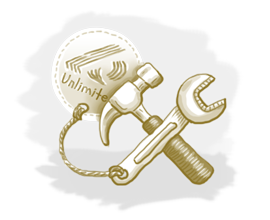 Are you looking for a CRM implementation guide to ensure that you don’t miss the crucial elements of a successful CRM solution implementation?
Are you looking for a CRM implementation guide to ensure that you don’t miss the crucial elements of a successful CRM solution implementation?
All too often a company purchases a CRM solution, implements it, and gets everyone using it—without having taken some very necessary steps beforehand.
It then comes as kind of a nasty surprise when, a couple years down the road, CRM has not only failed to recoup its considerable costs both in time and money, it is seen more as an added burden to the sales force, sales management, executives and IT than any kind of real benefit.
What has gone wrong in these cases?
#1: Not Just An IT Project
Much of the time CRM application choice, recommendation and implementation are conducted solely by the same group that sees to all of a company’s automation needs: IT. But a company that allows that to happen is not taking into account the fact that the CRM solution is going to be the backbone and mind of company operations relating to customers, including marketing, sales and customer service and/or support. When was the last time IT had to deal with customers? Market to customers? Sell to prospects? Deal with support issues?
It’s not that IT is being stupid, it’s that they just don’t have nearly enough information to intelligently choose a CRM application and be the only group to oversee its implementation.
Before IT ever evaluates a single CRM solution or talks to any vendors, there is a very vital action that must be undertaken first.
#2: Clearly Isolate Requirements
One common reason that CRM fails within a company is that the primary departments and individuals that will be the most impacted by it are not consulted beforehand. It is only afterward that complaints start coming up about how CRM is leaving marketing blind to their impact on sales; that it’s painful for sales reps to have to input data much of which doesn’t help them at all; that sales forecasting is still having to be conducted through lengthy meetings instead of CRM; that nobody knows about delivery and support issues until its too late and business is being lost.
In-depth interviews should take place with everyone concerned, especially the sales force. Find out what each of them really requires.
#3: Choose CRM Carefully
Once they find out your company is shopping for a CRM application, CRM vendors are going to be piling up on your doorstep. They will offer tempting deals, emphasize that theirs is the market leader, and put forth many enticements to rush in and purchase their product right away. They should be totally ignored until a full list of company requirements is compiled.
At that point CRM applications should be evaluated with attention only to how much the CRM solution will fit your requirements—without attention to price, market position or special “buy now” enticements.
The CRM solution chosen should be the one that fulfills most or all of these requirements, and all the time needed should be taken in finding and selecting it. At that point go after the price the company can afford and so on—you’ll probably find a very agreeable vendor once they know you’ve decided on their solution.
#4: Put CRM Into Use
It is only at this point CRM is implemented. All too often this step is taken without first having taken the previous measures, which creates more of an atmosphere of enforcement of CRM use rather than truly getting everyone enthused about it and using it.
This is the stage at which CRM begins to go off the rails—or if done right, where CRM starts actually benefitting the company and pulling everyone together as a team. Having chosen a CRM solution that truly fulfills requirements, getting it smoothly integrated with company operations will be far easier than trying to push it on employees through policy, rules, and regulations.
Your CRM solution is the heart and mind of your customer relationships. Do it right the first time—and reap the rewards all the way down the road.
What kind of CRM solution would fit in with this sequence? Sign up for one of our free webinars and find out.




















